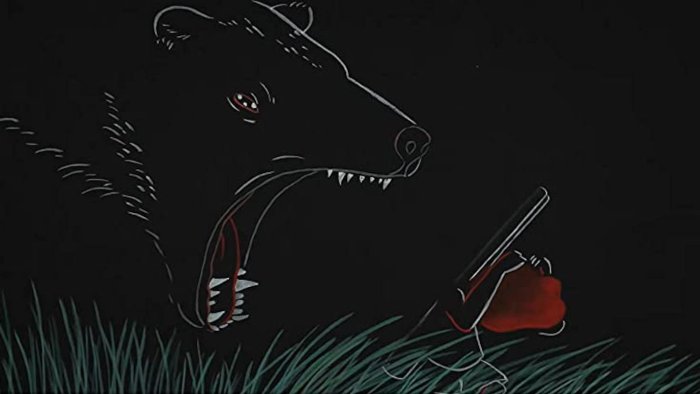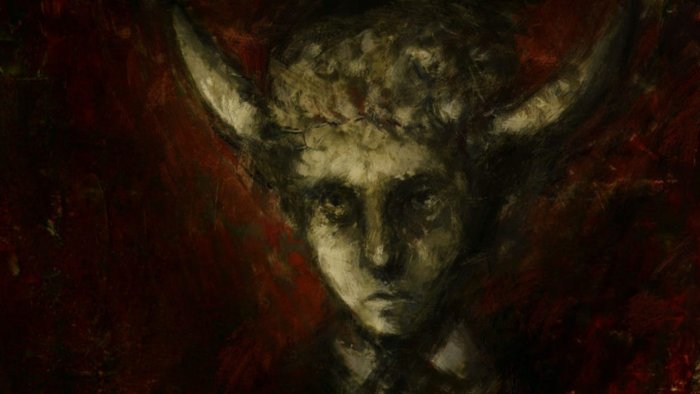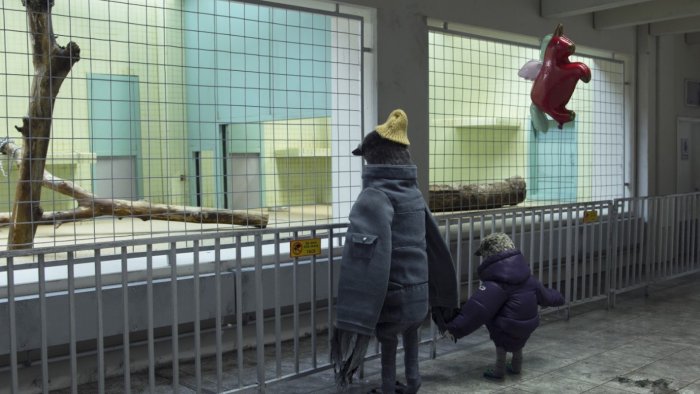Festival Fantoche Baden 2020
Filmexplorer's selection at the International Animation Film Festival Baden Fantoche 2020 (from the sections International Competition, National Competition, Coup de coeur). Texts by PM Cicchetti, Giuseppe Di Salvatore (GDS) and Emilien Gür (EG).
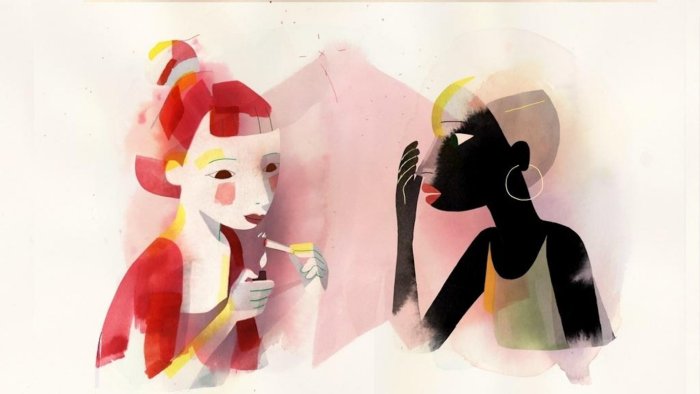
FOCUS
This article contains a third-party video. If you would like to watch the video, please adjust your settings.
Niki Lindroth von Bahr | SWE 2019 | 5’ | International Competition | Best Film of the International Competition
The connection to Roy Andersson’s film and aesthetic could be too easy to make, but still captures the caustic criticism and desolation that the “situations” of Nike Lindroth von Bahr’s scenes display. Before its animation, it is the settings of Something to Remember that are striking for their accuracy and expressivity – they have also been exposed as art objects at the Färgfabriken in Stockholm. Her animation films convey not only design but sculpture, and the physical presence of her models is not lightened by the animal puppets, whose museal rigidity hints at old fable illustrations or apocalyptic scenarios.
The sung text goes through the different scenes like an immanent cloudy sky: elegiac tonalities in the music and existential tonalities in the words (Martin Luuk) mix together and announce the imminence of a catastrophe. Therefore, the tension of the film is suspended from a disastrous place outside the film: Sweden? Europe? Or simply death…
Nonetheless, the plastic beauty of the image and the poetic clarity of the voice draw a neat universe of contemplation that is there for us to be enjoyed. Something to Remember is not a film to follow, a film that guides us somewhere; it is more like an exposed object, an art item to be admired. And to be remembered.
Giuseppe Di Salvatore
This article contains a third-party video. If you would like to watch the video, please adjust your settings.
Agnès Patron | FR 2019 | 14’ | International Competition
One does not have to share any intellectual affinity with Carl Gustav Jung to assert that L’heure de l’ours delves into the archaic. Agnès Patron’s animated short film builds up an archetypal fantasy around a mother and son connection, but does it on its own aesthetical terms, without relying on any psychoanalytical theory. In other words, it does not aim to illustrate (once more) the symbolic structure that gives rise to the Oedipus complex, but simply (and this simplicity is beautiful, since art is always about the individual and dismisses any kind of generality) expresses the feelings that a child may have towards his mother as he comes to terms with her sexuality. The plot revolves around three figures, the Son, the Mother and the Man, characterized by only a few elements: the Mother’s red hair alludes to her sex appeal, the Man’s hat and cigarette are enough to depict him as a threatening figure for the Son, while his silhouette reminds of Robert Mitchum in The Night of the Hunter. The jealousy of the Son towards the Man is represented towards various symbolic figures, such as a wild bear and burning fires, but the most powerful image conveyed by the film is that of the discovery of sexuality by the Son, as he comes upon two grasshoppers in the act of copulating. While the young boy tries to prevent the two insects from carrying out their sexual intercourse by pressing his finger on the back of the male, he suddenly visualizes his mother and the Man having sex in all sorts of positions, floating in the air, which is for him an obsessive and unbearable vision. The drawings’ spare style makes this scene both a literal depiction and a metaphorical symbolization of sex, and there is something truly admirable about this simplicity of expression. The images show that sex is all about bodies brought together in a quite intimate manner – which is strongly intensified by dance evolutions and a constantly towering music. It is precisely this intimacy that the Son cannot bear. For a few seconds, watching the film itself becomes an unbearable act. There is no more beautiful challenge to our adult way of seeing than embracing the vision of a child.
Emilien Gür
This article contains a third-party video. If you would like to watch the video, please adjust your settings.
Theodor Ushev | CAN 2019 | 27’ | International Competition
«What do you call the compulsion to make lists, to tell stories through lists?» asks the narrator of Theodore Ushev’s The Physics of Sorrow. The answer comes immediately: «a fear of forgetting».
The path to remembrance, however, rarely follows a straight line. The film has multiple beginnings, and multiple endings. The narrator recalls being born, again and again. «There is only childhood and death», he notes: «in between, nothing». Nothing but objects, perhaps: collections (of plastic soldiers, of bubble-gum wrappers, of matchboxes) left behind; the contents of a forgotten suitcase, or those of a time capsule. The archive, Lev Manovich wrote in 2001, will be the archetype of the future. The archive, and animation.
He was thinking of animated loops, but then, not all animated images are trapped in perennial return. Ushev uses the encaustic technique, which he has learnt from his grandfather: colour is mixed with beeswax and stencilled quickly, while still warm. At times the images are precise, like drawings on a stamp, and at other times they melt into each other, paste-like, emerging from the animated matter like figments of memory.
At its core, The Physics of Sorrow is a film about loss: personal, generational, historical. It is about the lost futures of those who grew up in the Eastern bloc during the Cold war, whose entire childhoods were shaped by the shadow of a war that never came. A pattern of shared loss turns into a shared search for meaning. Not by chance, Ushev reprises here his collaboration with fellow Bulgarian Georgi Gospodinov, a novelist who was born a few days before Ushev, and whom the director sees as his «soul-brother».
Having grown up in a blind corner of history, the anonymous narrator of Ushev’s film looks back at his past, only to find himself stuck in a labyrinth. In the darkness of a childhood basement, he has learnt to make up stories. Now, these half-fulfilled fantasies (a first-kiss romance with a circus acrobat; his rebellion against a drill sergeant, during military service) become the threads he follows, in an attempt to trace (imagine) his way out.
He moves abroad, to Canada and to a life without objects: a life unmoored. He becomes a story-teller, but the centre of the labyrinth keeps calling him back: back to a past that has devoured its own future. Running through the film (and the novel) are echoes of Greek mythology: Chronos and the Minotaur (figures of paternal rejection, of a generational legacy denied) haunt the protagonist, subvert his efforts to move beyond sorrow, to imagine life after the end times.
However, there remain the objects: not just remnants, tokens of loss, but also (reading across the lines, as it were) souvenirs of hope. Of stories yet to be told. A bubble-gum wrapper, subsequently, becomes a promise of love. «The day after the apocalypse», the narrator insists that, towards the end of the film, «there must be something that remains: something that can be used to start over».
PM Cicchetti
This article contains a third-party video. If you would like to watch the video, please adjust your settings.
Adrien Mérigeau | FR 2019 | 16’ | International Competition
In the Paris night, a lozenge-shaped eye guides a young woman through alleys, industrial backyards, and pop-up concert spaces. Aggregation, fragmentation, recomposition: if this film was a piece of music, it would be jazz. The narrative substance of Mérigeau’s second film is thin: the protagonist, a black poet named Reine, leaves the flat she shares with her sister, to wander into the night. She ends up in a church, where she experiences a flicker of human connection with a red-headed pianist. She flees, delves angrily into the city, then returns home.
Mérigeau mentions the sketchbook as his underlying frame of reference for the format of the film. A structure, but one whose coherence is the result of a process, rather than a given shape: the process of one’s attention erring, shifting from minute details to grand scenes. The visual language of Genius Loci follows the same cue. Underground comics (courtesy of Brecht Evens) in character scenes combine with establishing shots filled with the shimmering pastels of illustrated books, while at other times the image becomes more analytic, decomposing figures into shapes and lines - echoes of Kandinsky, even Picasso, as Genius Loci comes closer to acknowledging its animistic leanings. Minotaur-like bullies lurk in the backstreets. Windswept papers scamper like foxes.
Reine slips through the city. Her perception is drawn to abandoned objects, tokens of an alien existence, divorced from function and commerce, which the young poet weaves into a tapestry of her own. The urban cacophony finds a rhythm, a flow, and spirits begin to emerge. Such tapestry (the veil of a different type of consciousness, perhaps) keeps Reine at a safe distance, sheltered from the threats in the belly of the city. It also keeps her sheltered from the possibility of grace. Her fleeting encounter with Rosie signals a moment of reconfiguration: the potential for a different order. Soon, however, the animistic tapestry reasserts itself: the scene unravels, the red-headed musician turns into a tree, and our poet flees in frustration. There is a sense, here, of how difficult it is to escape one’s demons, and yet the tenderness of the closing scene, as Reine’s sister wraps her arms around her, suggests that such possibility is there. Reine might be running with the spirits of the city, but, as her sister reminds her, it’s her choice whether to become one.
PM Cicchetti
MENTIONS
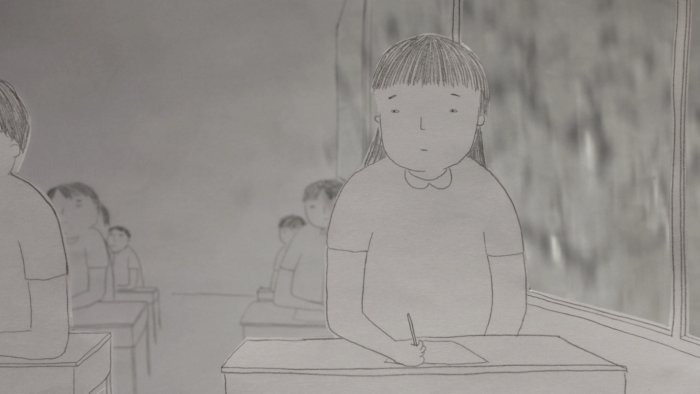
Louise Pau | CHN 2019 | 7’ | Coup de coeur
Survival HK –Hong Kong that is – or how to weave two parallel narrative threads through a minimalist animation design. Louise Pau’s drawing lines are as simple as they are desperate for the two threads that illuminate the dramatic dystopia of Hong Kong, here from a personal point of view. The divide between China and the British heritage is here replaced by the one between the internal, protected world of an English classroom and the external violent world of the street turmoil. This one prepares for an ideal world that, in reality, reveals itself already dismantled. Louise Pau elegantly plays with the distance between imagining – through a language, English – and observing – the reality of the resistance against the Leviathan. The contraposition of the two domains gives way to their swinging, almost merging, while the sound of recorded exercises flows into the noise of the street. GDS

Alexandra Ramires (Xá) | PT 2020 | 12’ | International Competition | Special Mention of the International Competition
An apparently occasional start, the death of a dog, turns out to be the source of life, through a tale that is told in a symbolic, surrealist style. The polarity between the two protagonists and their individual disproportions prefigure a complementarity. This is the story of a meeting, probably of love. Through Laura Goncalves’ paintings, we experience the intimate journey that, from monstrous disfunctions, leads to a creative reformulation of symbiosis. A crystal clear nightmare metamorphoses into a (still) disquieting happy end. GDS
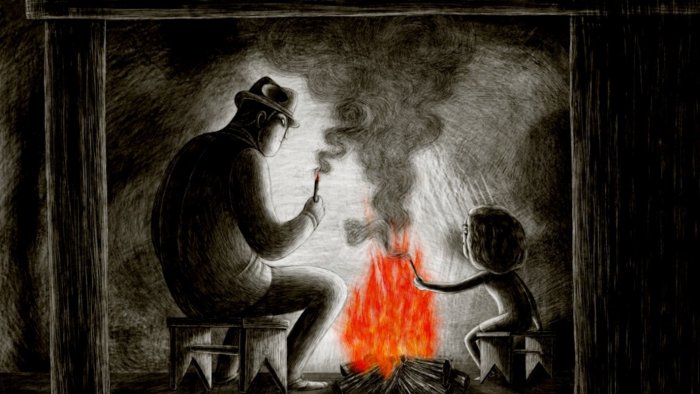
Regina Pessoa | PT 2019 | 13’ | International Competition
In our Swiss latitudes, Regina Pessoa’s animated short film will certainly recall the work by Thomas Ott, for they are both fine masters of the scraperboard technique. While both artists share a fascination for the gloomy and ambiguity, the universe depicted by Regina Pessoa in Uncle Thomas, Accounting for the Days is nevertheless significantly less dark than the macabre fantasies of her “Zürcher” counterpart. The film is a sort of tribute to the director’s uncle, an outsider in the family whose weird habits and obsessions for numbers got him banned from social life. Regina Pessoa evokes the touching relationship she had as a child with this mysterious figure, who was always there for her when she needed a break from her violent familial environment. The attitude of the director towards her uncle is quite remarkable, since it embodies some distinctive features of the ethics of critical relation described by Jean Starobinski in L’oeil vivant; namely, it respects the alterity of this beloved figure, without ever sinking into facile idealization. On the contrary, Regina Pessoa manages very well to suggest the shadows of his past, and makes of him a character even more complex than Citizen Kane, since she has the grace not to provide any rosebud-like explanation. EG
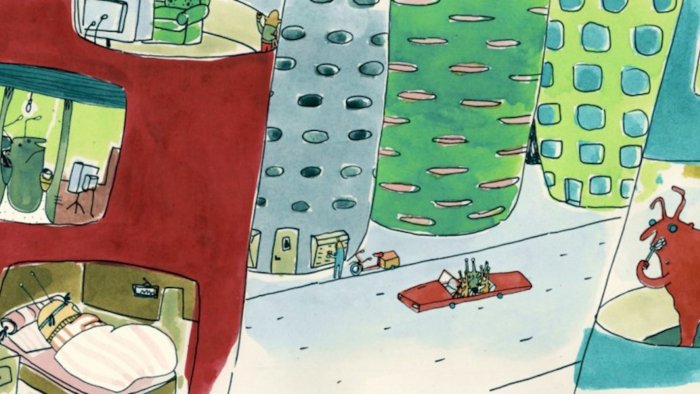
Aline Höchli | CH 2019 | 11’ | (Internationale Kurzfilmtage Winterthur 2019) | National Competition
With an ironic touch, Aline Höchli tells the genealogy of slugs. Their spirit seems to influence the lines of Höchli’ s drawings. With great attention to details, the funny story transforms itself into a moral fable. Our smile will turn into a thoughtful and concerned grimace. With or without the apparently bittersweet (and ecologic) finale, the film is a hymn to the reasons of the cicada. I will always defend the urgent necessity to recall the wisdom and rationality of the cicada. GDS
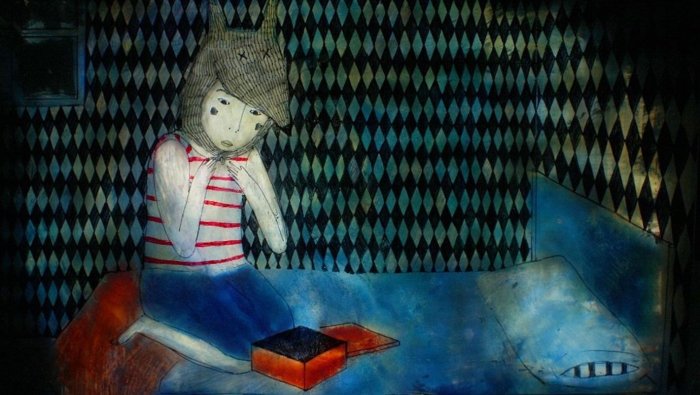
Marion Lacourt | FR 2019 | 11’ | (Locarno Film Festival 2019) | International Competition
We immerse ourselves in the perspective of a child, but the apparent fairy tale accents – the wolf and the sheep – are immediately transfigured into the child’s projections onto the family relationships. A family of women, where the absence of a male figure turns into the child making an idol of it (the father). Marion Lacourt takes on the side of the wolf, which amounts to a refined criticism of women’s weakness, but more than this socio-psychological stance, the film strikes for the animated permeability between dream, projection, imagination, and reality – with particular details that reveals a sharp spirit of observation. GDS

Erick Oh | KOR 2019 | 9’ | Coup de coeur
In this original work, we face frontally a structure that mimics the classical Universal Judgments, an all-encompassing theatrum mundi, afterlife included. A cosmological pyramid shows the circulation of life and death through an evolution that is always again a revolution. This circularity denies the apparent separation of good and evil, and any apparent organisation. We’ll never catch all the animated details of Opera, and the slow movement of the camera – from the top to the bottom of the pyramid, and back – seems to express the inevitability of destiny, of recurrent patterns, of the eternal repeating of the same. As viewers, we have the impression of dominating, yet we do not grasp anything. Control is finally broken by transcendence. GDS
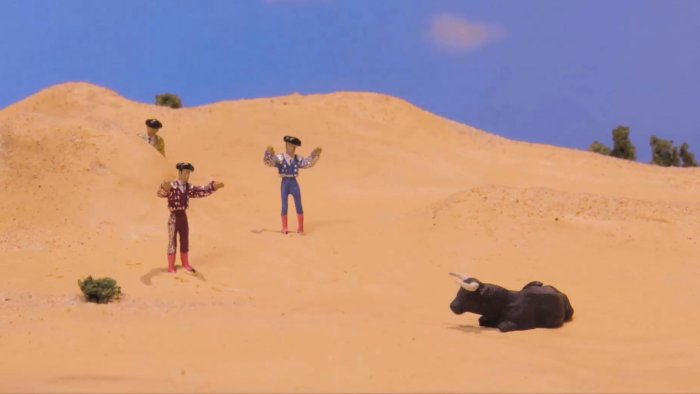
Coke Riobóo | ES 2020 | 13’ | International Competition
They run – nuns, tourists, paramilitaries, rebels, intellectuals, bishops - and the film flows on an excited tempo. Coke Riobóo has fun in drawing a synthesis of Spanish society from the perspective of relations of power. Neo-fascism, traditionalism, consumerism, tourism… they emerge as one giant system of freedom killing, supervised by the Pope himself, together with the clergy and the paramilitary. Made in Xpain, a contemporary illustration of Marxian “religion is the opium of people”, convincingly relaunches the theme of idolatry as governing our society. Also, thanks to its canny details and funny sketches – the nuns will lead the revolution… this piece of political non-correctness is a breath of fresh air in moralism-dominated cinema. GDS
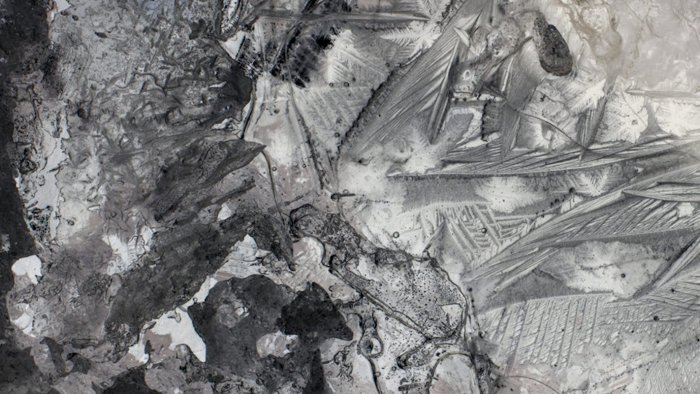
Laurence Bonvin | CH 2019 | 15’ | (Internationale Kurzfilmtage Winterthur 2019) | Swiss Competition | Best Swiss
Climate change is often more an idea than a visible matter. Looking at a glacier through negatives and at a pace of 4 photograms per second makes its invisible life visible, cracking, suffering. The play between moving images and photography has a metaphysical charm. Can the appeal of visual abstraction become distraction? The wonderful sound track (Bojan Milosevic) bears the entire weight of dramaturgy. GDS
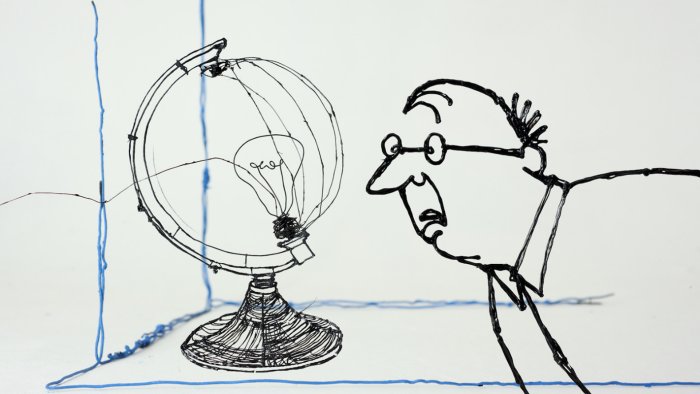
Dina Velikovskaya | RUS 2019 | 9’ | International Competition | Audience Award of the International Competition
Dina Velikovskaya’s animated short film is an enjoyable semantic play, which relies on the following principle: turn a metaphor into a film, make of a metaphor something literal. The ties between the parents and the child about to move away from them become an extensible thin thread that is difficult, but necessary, to break, since that provides both the daughter and the parents with a refreshed sense of freedom. The narrative unreels as the thread does, with a playful sense of suspense: when will the ties break apart? The film is an invitation to embrace transitions and shifts in our life, when everything hangs by a thread. EG
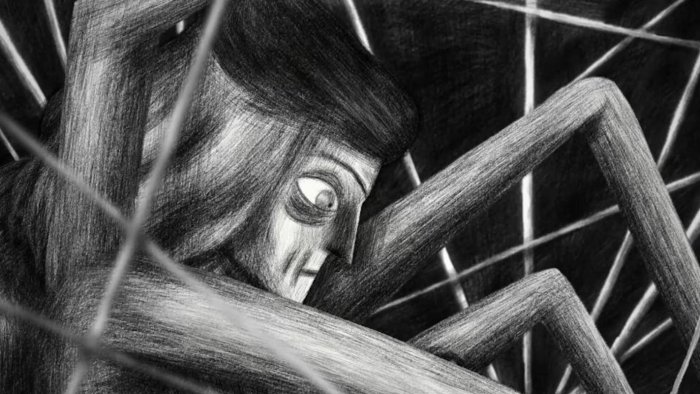
Delphine Priet-Mahéo | FR 2019 | 9’ | Festival Fantoche Baden 2020, International Competition
Starting with a refined observation of the daily life of an old couple, DOMUS develops into an expressive and unrealistic crescendo of complications. Animation films often drift off course in exaggerating small but meaningful details, but in Delphine Priet-Mahéo’s film there is more than that, for the crescendo will simply prepare the illuminating ambiguity of the end of the film. Retrospectively, the imaginative description of dementia and the expression of solitary mourning coexist. The present-absent ties with the old partner becomes the maze of a soul that suffers also the physical pain of a loss. GDS
